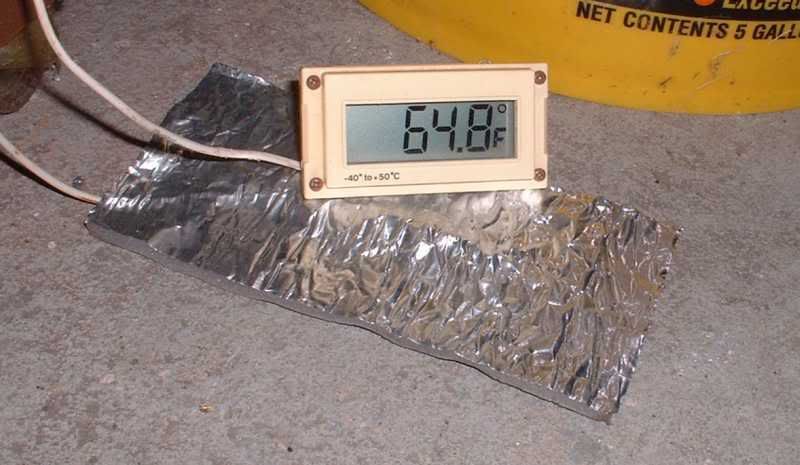Quote:
Originally Posted by Xringer

I'm using geothermal to 'heat' my basement. The floor slab and the bottom
six feet of the basement walls constantly emit heat at around 65 degrees.

Last winter, I never turned on the circulator pump in the basement.
It stayed cool down there all winter. Right around 65-67 degrees.
There is some heat loss from the oil burner and over-head pipes, but the
main source of heat is the floor. |
Xringer,
I think you might be overestimating the amount of hest coming from your basement.
I know I was, before I turned off the gas furnace I really had no idea how much the furnace and heat radiating down through the floors were contributing to the basement.
Here is a portion of a diagram from the book, Closed-Loop/Ground-Source Heat Pump Systems, Installation Guide, Which in my opinion should be issued to everyone at birth.
The temperatures shown on the diagram are average temperatures. They are all the momentary air temperatures over several years, all averaged out to a yearly average temperature.
It just so happens, and should come as no surprise, that the temperature of the earth at around 25 feet is essentially the same as the average temperature. Even though the air temperature swings day to night and day to day and season to season, the earth temperature at 25 feet stays very much the same.
Obviously, you are familiar with the daily air temperature swings, well the earth temperature at the surface (like maybe .25 of an inch) also has a daily swing too, but because it has more thermal mass, the swing comes a bit later, and a bit less than the air temperature swings. In your area, the maximum earth surface swing is about plus and minus 20 degrees. As you progress deeper, the earth temperature swings come still later and are of still lower amplitude than at the surface.
So, if you had no heat coming from your furnace or pipes, and no heat radiating through the floor, toward the end of the coldest months, your basement would actually be about 40 degrees, safely above freezing, but well below the 65 degrees you are measuring.
...owing to the mass of the ground around your home it might take two or three years for the accumulated heat from your warmed house to dissipate.
If your foundation was very well insulated, including the basement floor, there would be less heat loss & gain and the time for the earth in contact with your insulated basement to reach equilibrium would be shorter.
So, realizing all this, I really paid attention to the level of insulation that is called for here in Oregon for floors that are over enclosed, unheated areas. The spec calls for R-30, I have already put in R-13 so far, and will finish out the insulation as winter progresses.
According to the charts & Information igiven in the book, an unheated basement at the end of the colder months might be around 65 degrees in southern Georgia. There the average temperatures are around 67 and the temperature swings at basemet depths are just a few degrees.
Best Regards,
-AC_Hacker